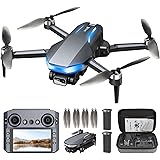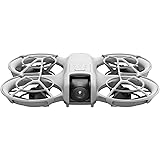The landscape of modern warfare is continuously reshaped by rapidly evolving technologies. One of the most significant challenges nations face today is effectively countering the proliferation of inexpensive yet devastating attack drones. As highlighted in the accompanying video, Ukraine’s experience offers invaluable insights into the inventive, often unconventional, strategies employed to defend against relentless aerial assaults.
For months, Russian forces have unleashed hundreds of Shahed drones nightly, posing a complex threat to Ukraine’s air defense infrastructure. Intercepting these unmanned aerial vehicles (UAVs) with expensive, high-tech missiles is economically unsustainable. This pressing economic reality has spurred remarkable ingenuity, leading to the repurposing of vintage training aircraft for critical counter-drone missions, embodying Ukraine’s drone defense strategy.
Ingenious Counter-Drone Strategies in Practice
Faced with an urgent need for cost-effective solutions, Ukraine has revived a fleet of Yak-52 training planes. These aircraft, originally designed for pilot instruction and featuring simple wooden propellers, now serve a vital role in protecting Ukrainian skies. This pivot demonstrates a profound adaptability, turning a seemingly obsolete asset into a crucial component of national security.
The operational tactics employed by these specialized units are both daring and precise. Gunner teams must open their canopies at altitude to engage Russian drones with assault rifles, often from just a few hundred meters away. Ukrainian personnel, like Serhii, report engaging Shaheds within a perilous 150 to 200-meter range, a distance demanding immense skill and nerve. This close proximity ensures accuracy but significantly increases danger from the drone’s potential blast wave.
Serhii’s personal account underscores the efficacy of these methods; he successfully downed three Shahed drones in merely half an hour during a recent patrol. While hitting the target is achievable, the primary challenge remains detection, as these repurposed planes lack sophisticated onboard radar systems. Instead, they rely on ground intelligence and the sharp observational skills of the gunner to locate targets, often flying above and then descending to shoot from below.
The Economics of Ukraine’s Drone Defense
The strategic advantage of using Yak-52s lies overwhelmingly in their cost-effectiveness. A single older model Yak-52 can be acquired in Europe for approximately 50,000 euros, a sum considerably less than the estimated cost of one Russian Shahed drone. This stark economic disparity is further emphasized by reports of successful interceptions using just a handful of bullets, a fraction of the expense associated with traditional missile defense systems.
Consider the scale of the threat: Russia is reported to launch anywhere from 500 to 600 Shahed drones daily, alongside reconnaissance drones that direct missile strikes. Attempting to intercept every incoming drone with costly surface-to-air missiles would quickly deplete national treasuries and limited arsenals. The ability to neutralize threats for significantly less money, using inexpensive training planes, becomes an indispensable aspect of modern battlefield economics.
For instance, an F-16 fighter jet costs millions of dollars per unit, and there have even been instances where these advanced aircraft sustained damage from debris while intercepting drones. In contrast, the relatively minimal investment in Yak-52s offers a sustainable defense against a high-volume, low-cost adversary. This asymmetrical cost exchange forces attackers to spend more resources for less impact, gradually shifting the balance of power.
Evolving Drone Threats and Countermeasures
The battlefield is a dynamic environment, with each side continuously adapting to the other’s innovations. Just as Ukraine refines its counter-drone tactics, Russia is enhancing its drone capabilities. Newer Russian Shahed drones are now equipped with cameras designed to spot intercepting aircraft or other drones, adding another layer of complexity to aerial engagements.
These advanced drones leverage artificial intelligence or direct operator input to evade pursuers, making the task of Ukrainian pilots even more challenging. Taras, a commander of one such unit, articulates the immense psychological burden. Pilots face not only the physical risks of aerial combat but also the heavy responsibility of preventing drones from reaching their intended civilian targets, a grave duty that significantly impacts morale.
While these planes may lack the technological sophistication of modern combat aircraft, their versatility is a critical asset. They can take off from rudimentary locations, including bumpy fields, providing essential operational flexibility. This reduces their vulnerability to pre-emptive strikes on established airfields, enhancing their survivability and continuous deployment capabilities.
Lessons for European Air Defense and the “Drone Wall”
The experiences of Ukraine provide critical lessons for its Western allies, particularly regarding the concept of a “European drone wall.” Recent incursions into Polish airspace underscore the broader vulnerability of European nations to drone threats. Ukraine’s success rate in downing Russian drones, estimated at 85-90% by international observers, demonstrates the effectiveness of a multi-layered defense approach.
This strategy advocates for integrating cheaper, improvised solutions, such as the Yak-52s, to engage initial waves of drones. Subsequently, more advanced and expensive assets like F-16s or Patriot missiles can be reserved for threats that are too fast, too high, or too complex for simpler methods. Such a tiered defense maximizes resource allocation, ensuring that high-value assets are deployed only when absolutely necessary.
The economic imperative remains paramount for all nations. Russia’s ability to produce inexpensive drones in large quantities means European countries cannot afford to consistently employ costly interceptors for every incoming threat. Ukraine’s drone defense model, therefore, provides a template for balancing effective deterrence with sustainable financial planning, advocating for a pragmatic blend of innovation and traditional military capabilities in the face of evolving aerial threats.











